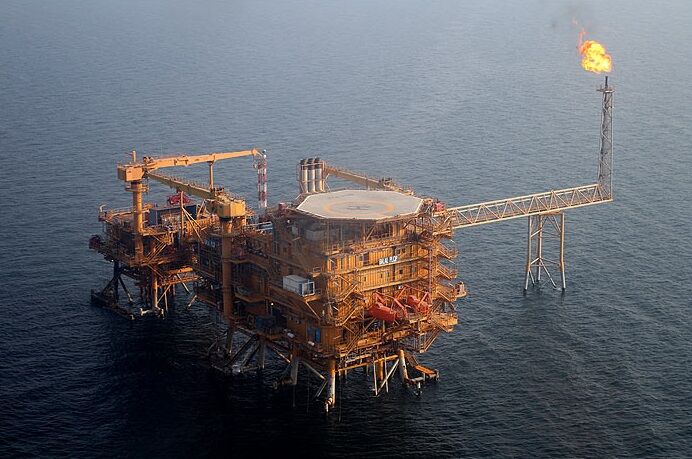The Islamic Republic’s general policy, enacted in 2000, emphasized increasing the capacity of recovered oil in proportion to the existing reserves and the country's enjoyment of increased economic, security, and political power.
Minister of Petroleum Bijan Zangeneh has said Iran can easily bring its production to 6.5 mb/d, which would create jobs, make Iranian industries more active and boost Iran’s security. One important issue with regard to increased production pertains to the recovery rate of oil fields. Most Iranian oil and gas fields are currently in the second half of their lifecycle and based on reservoir engineering estimates, and a decline in the recovery rate in some wells is natural.
According to the International Energy Agency (IEA), Iran would be experiencing a natural annual decline in production over the 2011-2020 period. That is while there is 1.1-million-barrel demand in the world, which would require enhanced and improved recovery.
Although the recovery rate from reservoirs depends on the rock and fluid characteristics of each reservoir and no general comparison may be made, a review of the world oil and gas industry shows that the recovery rate from these fields increases significantly after secondary and tertiary recovery. The existence of nearly 120 oil fields in the country underlines the necessity of increasing recoverable reserves through EOR and IOR. Studies show that immiscible gas injection is the most suitable solution for secondary recovery and preservation of pressure in most Iranian fields. Although water injection as another important method is required in special reservoirs, recently in collaboration with the Iranian Offshore Oil Company (IOOC) and Research Institute of Petroleum Industry (RIPI), for the first time in the country, a pilot project to increase oil extraction by injection of nanofluid in the offshore Belal field has been implemented. The main purpose of the project was to investigate the possibility of injectable nanofluids as one of the new methods to increase the oil recovery rate from the reservoirs, compared with water injection.
In this research project, a broad spectrum of nanostructures were studied and the stability of nanostructures under salinity, temperature and reservoir pressure was investigated. Acquiring the technical knowhow for stabilizing nanostructures in salinity conditions and high temperatures is one of the achievements of this project.
A review of laboratory results and simulation of injection of selected nanofluid into a field-scale model showed that adding nanoparticles to the current injected water to the reservoir can significantly enhance the reservoir recovery rate compared to Persian Gulf injected water without adding nanoparticles. In order to verify these results, it is necessary to inject nanoparticles into one of the wells of the Surmeh reservoir of the Belal field.
18,000 Barrels of Nanofluids
In the first step, the objective is to inject 18,000 barrels of nanofluids into Well No. 10 of the Belal field. After examining the feasibility of injectability of nanofluids as one of the new methods to increase the oil recovery factor, the technical knowhow for producing suitable nanostructures (nanoemulsions) has been acquired in order to facilitate the oil recovery. This project was first assigned to RIPI in 2015. NIOC Directorate of Research and Technology is steering the project.
In the first phase of this project, the formulation and technical knowhow of using nanoparticles to prepare stable emulsions at laboratory scale were designed and in the second phase, the simulation of injection of selected nanofluid into the Surmeh reservoir of the Belal field was on the agenda. The third phase of the project was dedicated to the preparation of selected nanofluids on semi-industrial scale for enhanced recovery tests for injection into this reservoir, and in the fourth phase, single-scale operations began in one of the injection wells in the Belal field.
Given the pilot implementation of polymer injection, which is being followed up on by the Sahand University of Technology in the form of an EOR project, IOOC could be considered as a leading company in implementing EOR methods.
It is noted that NIOC focused on enhanced recovery based on the scientific and research capacity of universities and research centers in 2014. Thanks to such approach, technological studies on about half of hydrocarbon reserves is under way within the framework of joint cooperation between the petroleum industry and the scientific community of the country.
Maximum Recovery Inevitable
Ali-Reza Salmanzadeh, CEO of IOOC, said maximum recovery from oil reservoirs was inevitable in light of the global energy conditions and global forecasts on oil demand in coming decades. He said: “Therefore, any activity aimed at improving the rate of oil recovery would be of high significance.”
He said the nanofluid injection project was a joint initiative of NIOC Directorate of Research and Technology, RIPI and IOOC, expressing hope that the pilot would yield acceptable results.
Less Impact on Environment
Mohammad-Reza Rabi’eh, deputy head of the Belal oil platform, touched on the start of operations for injecting nanofluid into the Surmeh reservoir, saying: “The Belal oil field was developed under a buyback deal with France’s Total. It came online in 2002 with an output of 40,000 b/d.”
“With a view to countering the decline in the reservoir pressure, four injection wells were designed in this platform and currently nanofluids are being added to the injected water in the reservoir. In the first step, 18,000 barrels of nanofluid would be injected into Well 10 of Belal,” he said.
Rabi’eh said that the results of the pilot project of nanofluid injection were not expected shortly, adding: “In case of successful results, injection of nanofluid into injection wells will start.”
Belal is located about 100km southwest of Lavan Island, near Iran’s water border with Qatar in the Persian Gulf.
The oil produced in this field is carried via a 100-km pipeline to Lavan Island prior to being blended with Salman’s oil for processing and export.
Courtesy of Iran Petroleum


Your Comment